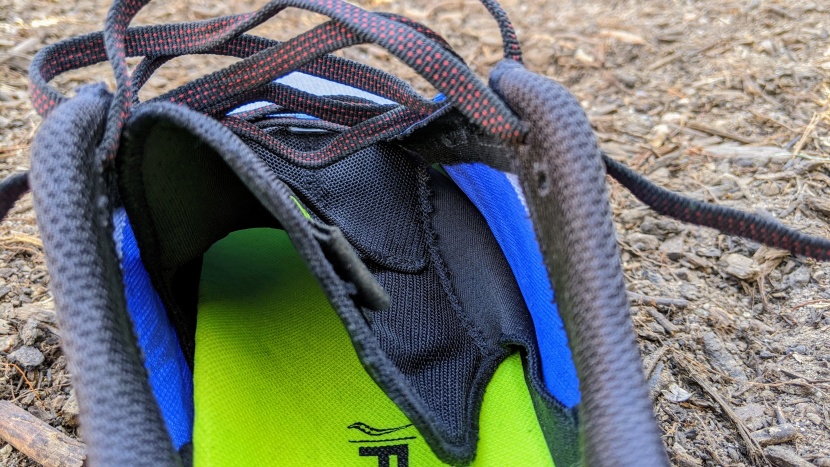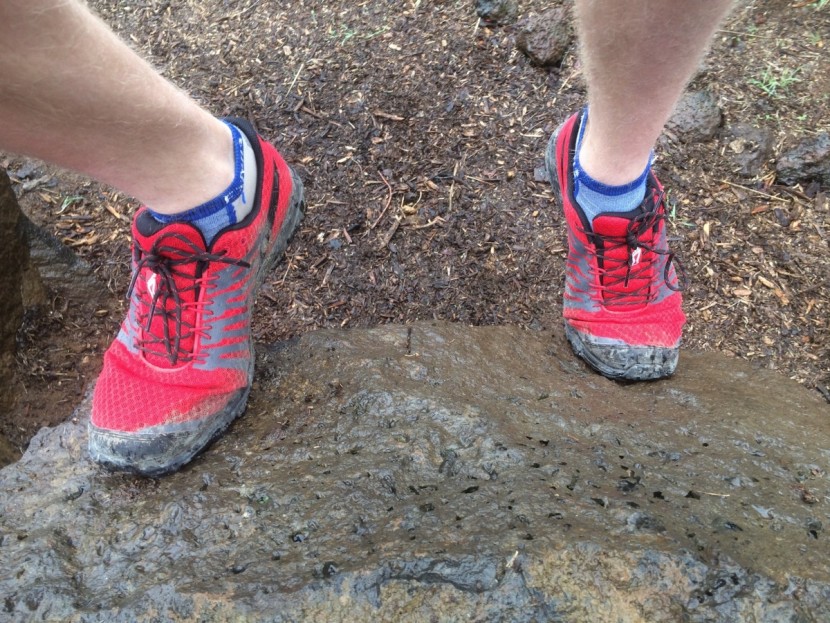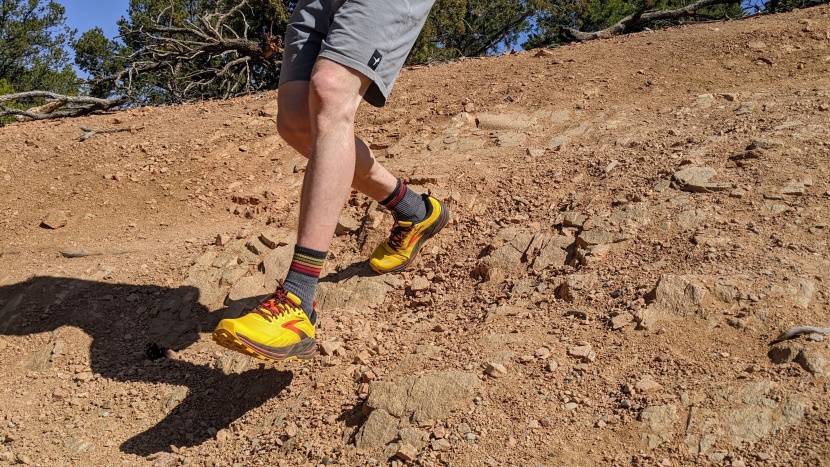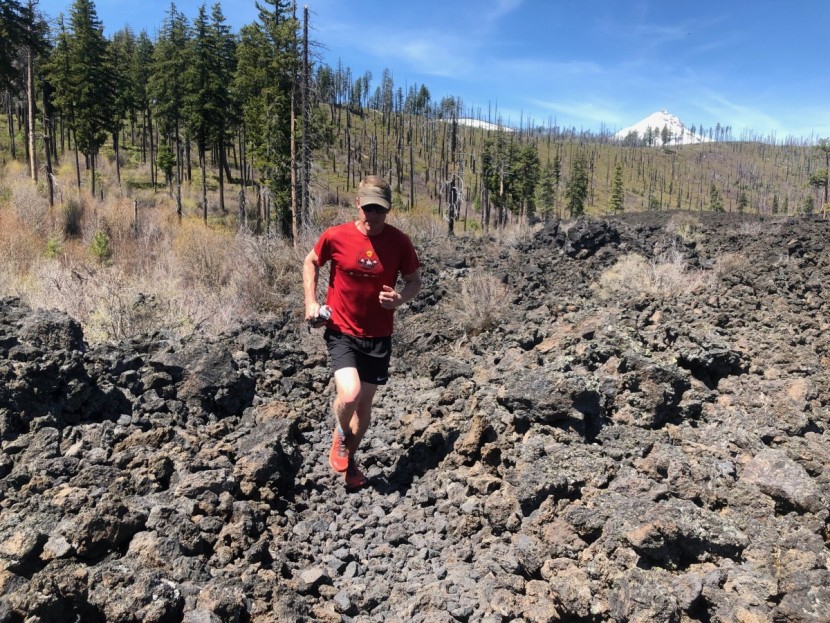Comfort and Fit
There is no doubt that comfort is the most subjective metric that we test for, as it is highly dependent on the size and shape of an individual's foot. While it is virtually impossible to come up with an objective score of comfort, we compare every shoe to every other shoe to paint a relative picture of how each stacks up. We consider certain aspects of fit that may be more accommodating to specific foot shapes and comment on them in our write-up. We also compare every shoe to an “average fit” for that size to be able to offer information on which ones run long or narrow.
Importantly, we also conduct a water drainage test to shed light on another important aspect of trail running shoe performance and comfort. Since this test is only a tiny aspect of overall comfort, we use this data to slightly modify the satisfaction scores for the very best and worst performers and leave most scores unaltered. Due to the subjectivity of this metric, a shoe that irks us may be a dream for someone else — we simply note our experiences wearing them.
Traction
Our initial opinions of the traction performance of these trail runners are formed on adventures and everyday runs. We also subject each shoe to various surfaces to compare this metric and analyze things like lug depth to gauge how design influences traction. To do this, we find areas of steep dirt trail, steep grass, dry rock talus, wet rock, and steep muddy trail, and again run back and forth in every shoe on every type of terrain. We note how well each model performs on the various surfaces compared to others.
Back in the lab, we measure lug depth to get the beginning of the picture of the shoe tech. We consider outsole materials and rigidity. We look at lug pattern, placement, and spacing. And we go back out and run more. We seek out the crud, the late and early-season snow patches, the gloopy mud pits, and the steep and loose trails.
Stability
To better compare stability head-to-head, we locate a steep grassy slope and run back and forth across it, side-hilling incessantly to see which shoes induce our ankles to want to roll over more frequently. We also run down this slope repeatedly, comparing relative stability in a very real-world test. Running down steep hills is an integral part of trail and mountain running. In the lab, we measure key components, including outsole width and heel-to-toe drop (again, adhering to World Athletics standards, not going by manufacturer claims), to help us dive into the nitty gritty of what contributes to a shoe being more or less stable.
Foot Protection
Running over variable landscapes in the mountains subjects us to plenty of buff trails, alpine tundra, sloppy mud, creek crossings, talus fields, steep and loose scree, and high-altitude technical scrambling. Still, we want to be sure that we know exactly how each shoe compares to the others regarding underfoot protection. We find a gnarly patch of sharp rocks and talus and spend an entire afternoon running back and forth in each pair of shoes, comparing them to each other while taking copious notes. We consider responsiveness, stack cushioning, and toe protection. In our lab, we cut every pair in half to examine their insides, understand the thicknesses of rock plates, and get our eyes on the technology used in each shoe. We kick rocks, run across sand and gravel, and take tumbles to put these shoes to the test.
Weight
This one is easy. We weigh the shoes straight out of the box and write down their weight per shoe, completely ignoring the figures on manufacturers' websites. Every shoe we measure is exactly the same size, so that all weights are directly comparable. The lightest shoes receive the best score, and we go down the list. The final score is based on our algorithm, which evenly evaluates the weight, making sure each shoe is scored without user bias.





